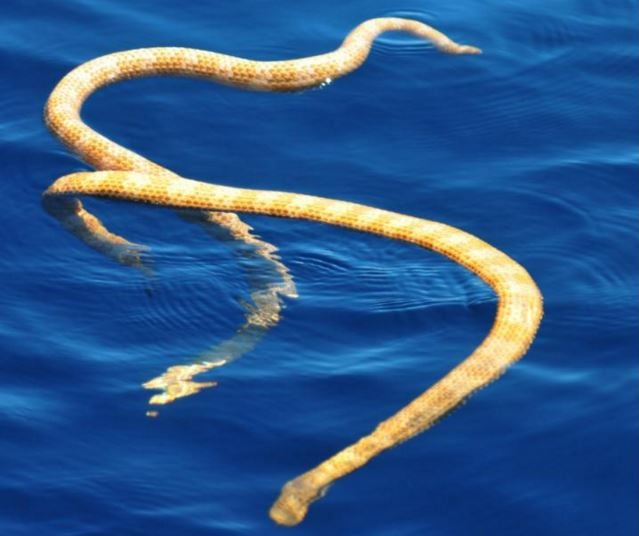Two species of presumably extinct sea snakes have been discovered by scientists and a wildlife officer off the coast of Western Australia. Zoologists from the ARC Centre of Excellence for Coral Reef Studies at James Cook University in Queensland say it is the first time the snakes have been seen alive and well since vanishing from their only known habitat on Ashmore Reef in the Timor Sea at the end of the last century.
The researchers wrote about these discoveries in the scientific journal Biological Discoveries.
Lead author, Blanche D’Anastasi, a Marine Conservation Geneticist and PhD Candidate, said:
“This discovery is really exciting, we get another chance to protect these two endemic Western Australian sea snake species.”
 A photograph of the rare short nosed sea snakes discovered on Ningaloo reef, Western Australia. (Image: Eurekalert. Credit: Grant Griffin, W.A. Dept. Parks and Wildlife)
A photograph of the rare short nosed sea snakes discovered on Ningaloo reef, Western Australia. (Image: Eurekalert. Credit: Grant Griffin, W.A. Dept. Parks and Wildlife)
“But in order to succeed in protecting them, we will need to monitor populations as well as undertake research into understanding their biology and the threats they face.”
Sea snakes’ ID confirmed
After Grant Griffin, a Western Australia Parks and Wildlife Officer, sent a photograph of a pair of snakes taken on Ningaloo Reef to Ms. D’Anastasi for identification, the discovery of the critically endangered short nosed sea snake (Aipysurus apraefrontalis) was confirmed.
Ms. D’Anastasi said:
“We were blown away, these potentially extinct snakes were there in plain sight, living on one of Australia’s natural icons, Ningaloo Reef. What is even more exciting is that they were courting, suggesting that they are members of a breeding population.”
The scientists also made another surprising discovery. They uncovered a significant population of the very rare leaf scaled sea snake (Aipysurus foliosquama) in the lush seagrass beds of Shark Bay, a World Heritage Site in a very special part of the Gascoyne region of Western Australia.
The snakes were discovered 1,700 kilometres (1,056 miles) south of their only known habitat on Ashmore Reef.
Ms. D’Anastasi added:
“We had thought that this species of sea snake was only found on tropical coral reefs. Finding them in seagrass beds at Shark Bay was a real surprise.”
Both species ‘Critically Endangered’
Under Australia’s threatened species legislation, both the short nosed and leaf scaled snakes are listed as Critically Endangered; meaning they have special protection.
In spite of this marvelous news, sea snake numbers in several marine parks have been declining alarmingly, and scientists are unable to determine why.
Dr, Vimoksalehi Lukoschek, from the Centre of Excellence for Coral Reef Studies, said:
“Many of the snakes in this study were collected from prawn trawl by-catch surveys, indicating that these species are vulnerable to trawling. But the disappearance of sea snakes from Ashmore Reef, could not be attributed to trawling and remains unexplained.”
“Clearly we need to identify the key threats to their survival in order to implement effective conservation strategies if we are going to protect these newly discovered coastal populations.”
Citation: “New range and habitat records for threatened Australian sea snakes raise challenges for conservation,” Blanche Renee D’Anastasi, Jean-Paul Hobbs, Colin A Simpfendorfer, Lynne Van Herwerden, and Vimoksalehi Lukoschek. Biological Conservation, Volume 194, February 2016, Pages 66–70. DOI: 10.1016/j.biocon.2015.11.032.
Video – Sea snakes in western Australia
Blanche D’Anastasi’s research is on small range endemic species of sea snake in Western Australia. Recently she and colleagues discovered a population of Aipysurus foliosquama, the Critically Endangered Leaf-scaled Sea Snake, in Shark Bay, Western Australia. They thought that this species was extinct.

